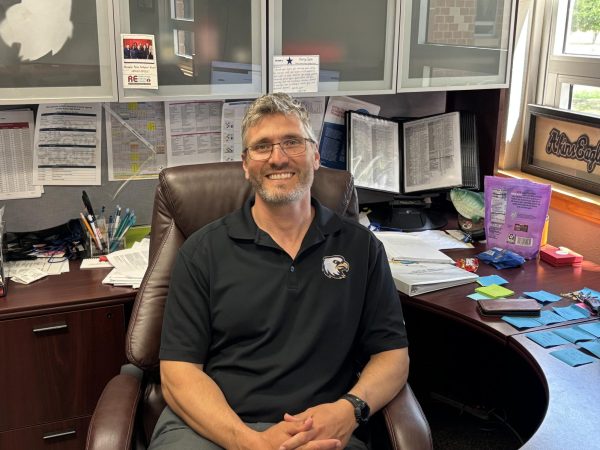Transgender students face unique school experiences
February 25, 2020
So what are you?
This can be a common question that transgender students hear when they tell someone they don’t know that they are transgender.
The concept of transgender identity is not commonly taught well by schools or parents. So when students begin coming out publicly at school, they are often subject to misunderstandings, harassment or even assaults.
Last year, the Austin school board approved a new sex education curriculum last year that will begin to teach elementary and middle school students about concepts related to gender identity in the coming years. In grades 3-5 the district’s curriculum will define sexual orientation as the romantic attraction of an individual to someone of the same gender or different gender. In 6-8 grade schools get into more depth about the difference between gender identity, gender expression, and sexual orientation.
The new district curriculum will not address the high school sex education curriculum.
According to the 2017 National School Climate Survey, 87.3% of LGBTQ+ students said they faced some type of harassment
or assault based on personal characteristics while in school. The constant feeling of them not fitting in leads to a condition called “minority stress,” which can manifest in anxiety, depression or self-harm. While there has been some progress in recent years to improve the rights and acceptance of transgender people, there are still many people who either do not accept them or simply do not understand them.
People coming out as anything other than straight doesn’t just come with happiness from being able to love someone they want but it also comes with a lot of bullying, threats, harassment and much more. According to the Humans Rights Campaign survey, 26% of LGBTQ+ youth say their biggest problems are not feeling accepted by their family, trouble at school/bullying, and a fear to be out/open.
People don’t know the trouble of someone coming out as LGBTQ+, especially as a child.
The term “transgender” was forwarded and popularized by activists such as Kate Bornstein, Holly Boswell, Leslie Feinberg, and Riki Wilchins, to create a coalition of persons who did not t neatly into gender binaries, or who deed gender norms and expectations. “Transgender” was also adopted by persons who did not identify with the earlier label “transsexual,” due to its association with medical transition across the gender binary.
Nearly 2% of high school students in the United States identify as transgender, according to data published by the U.S. Centers for Disease Control and Prevention. Another, 27% feel unsafe at school or traveling to or from campus while 75% of transgender students feel unsafe at school and 35% attempt suicide.
Transgender students at Akins face unique challenges with having other students and teachers respecting their preferred pronouns or even expressing disbelief about their gender identity, said sophomore Chris Sanchez.
“No like physical bullying or anything like that,” Sanchez said. “No one’s like threatens me or anything like that it’s just like people make comments, … and they say like, ‘oh but you’re not really what you say you are.’”
Trans students at Akins said they don’t feel in danger at Akins, but they also don’t feel completely safe either.
No public incidents of severe harassment are widely known, but trans students say they do face the smaller and quieter types of harassment that can cause them to feel like an outsider.
Akins doesn’t have non-labeled bathrooms or locker rooms. Also, teachers and staff have not received training on how to respectfully work with transgender students.
That said, there are staff and teachers who are really accepting and try their best to make LGBTQ+ students accepted at Akins. The Akins Gender and Sexuality Alliance Club also provides a safe refuge for students to meet other LGBTQ+ students and supporters.
Correct pronoun usage is an important part of how transgender people identify themselves, the most known pronoun instead of “he” and “she” are “they” and “them.” Sanchez told some teachers about them being non-binary and that Sanchez uses specific pronouns.
“It’s hard (for them) to get used to, some teachers don’t use the right pronouns at all but for the most part, they try to,” Sanchez said.









